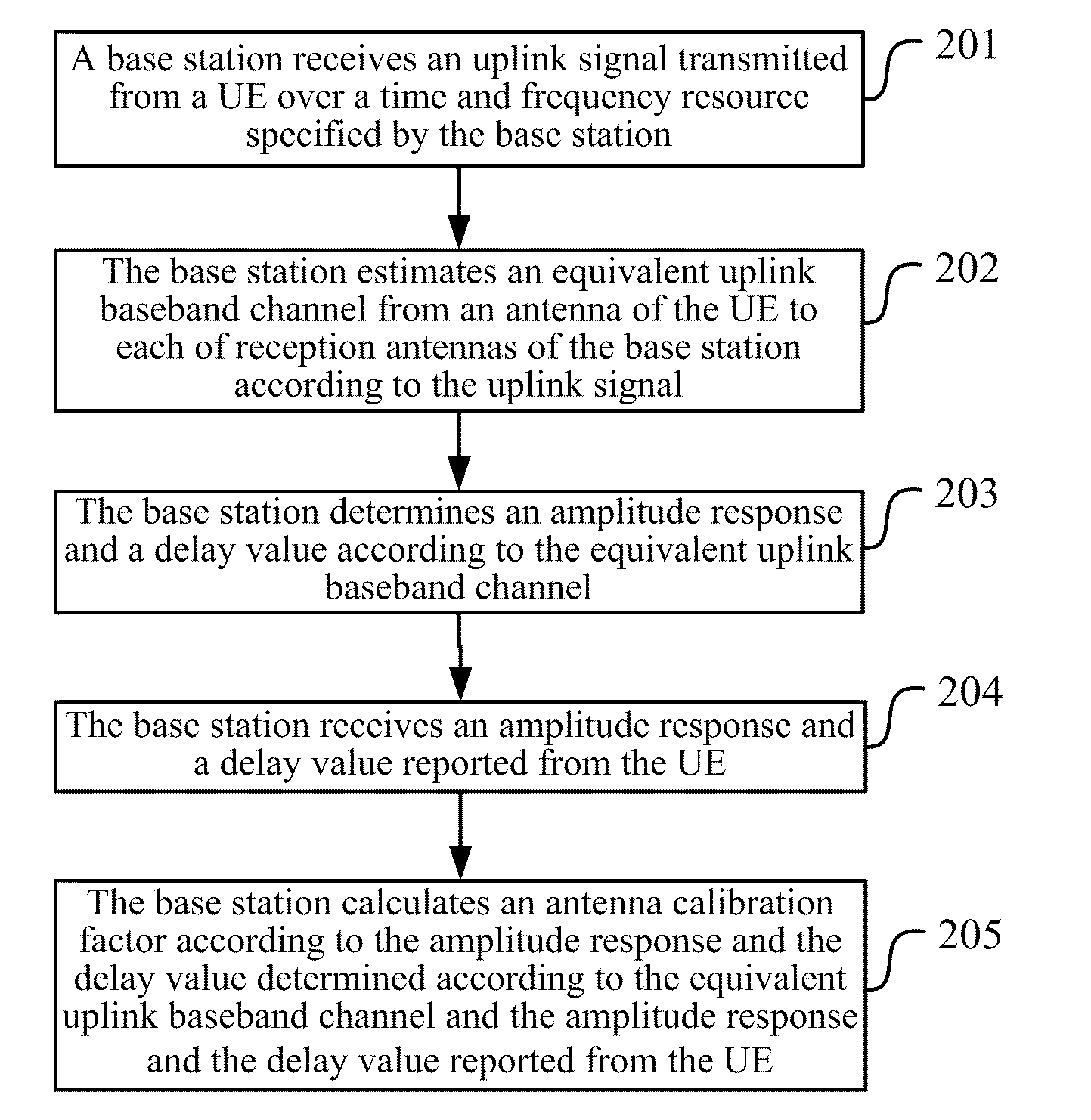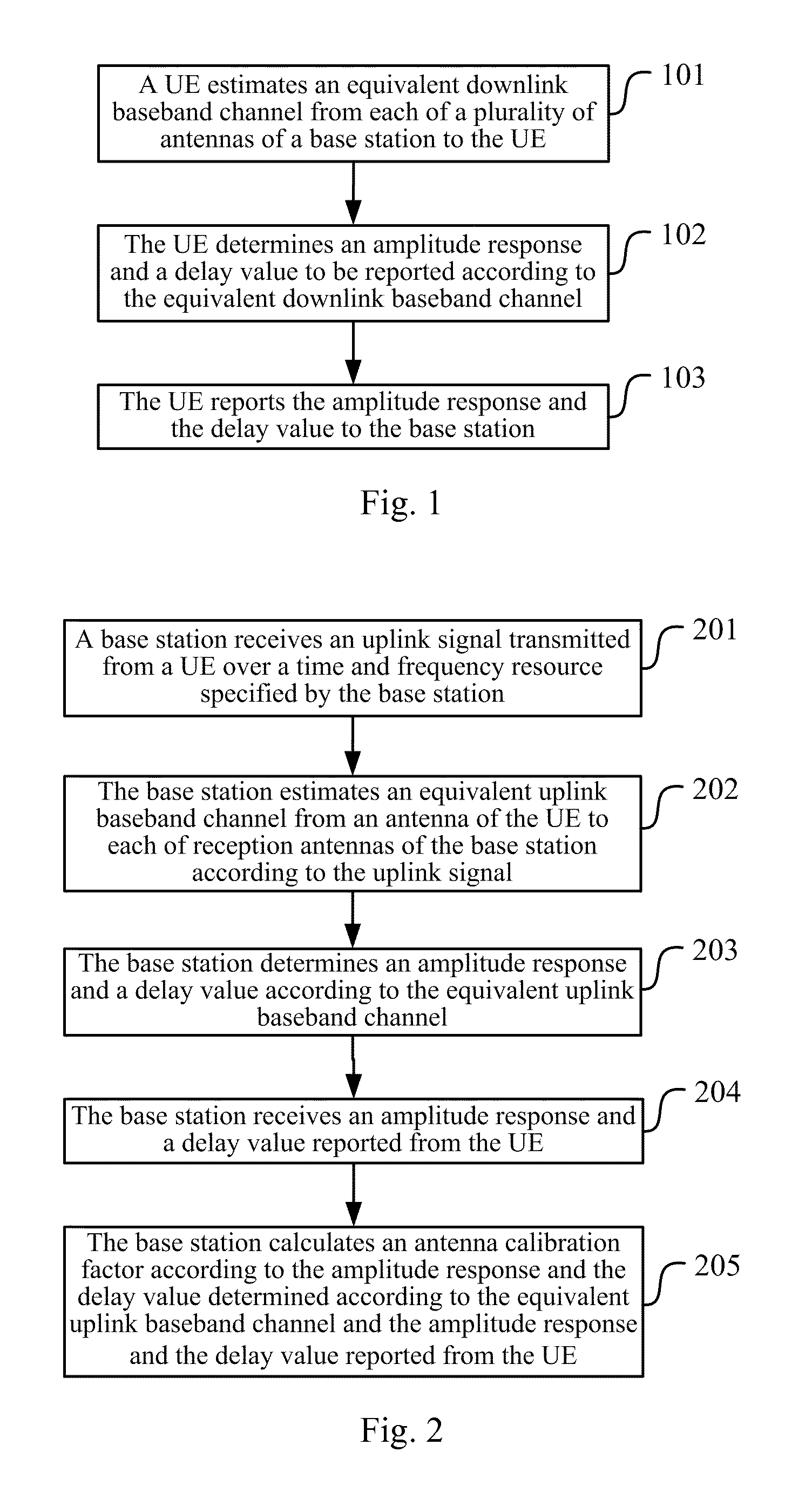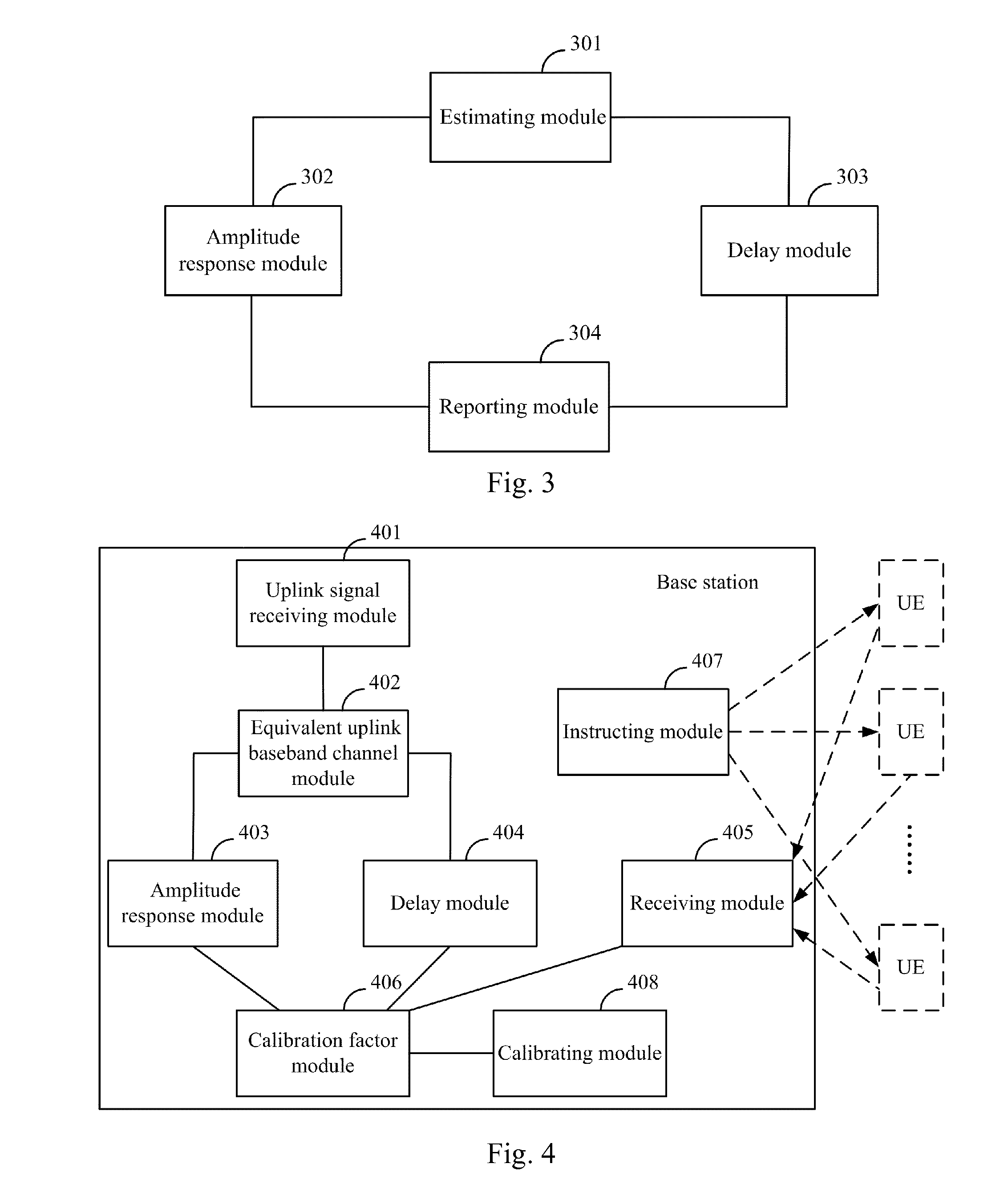Method and device for reporting antenna calibration information and determining antenna calibration factor
a technology of antenna calibration and factor, applied in the field of radio communication, can solve the problems of occupying considerable resources, introducing quantization errors, and mismatching of transmission and reception circuits
- Summary
- Abstract
- Description
- Claims
- Application Information
AI Technical Summary
Benefits of technology
Problems solved by technology
Method used
Image
Examples
Embodiment Construction
[0064]The multi-antenna technology has become a member of crucial technologies of a next-generation radio communication system, and linear pre-coding / beam-forming in the multi-antenna technology is an effective means to deal with a fading channel, to lower an error probability and to improve the performance of a system. With reciprocity of uplink and downlink channels, a TDD system can obtain information of a downlink channel from a base station to a UE according to information of an uplink channel, from the UE to the base station, estimated by the base station to thereby calculate a pre-coding matrix / a beam-forming weight. However, reciprocity of uplink and downlink channels may not exactly hold in a practical system, and a technical solution according to embodiments of the invention addresses the problem of antenna calibration when reciprocity of uplink and downlink channels does not hold. In the solution, amplitude information and phase information (a delay) are separated out fro...
PUM
 Login to View More
Login to View More Abstract
Description
Claims
Application Information
 Login to View More
Login to View More - R&D
- Intellectual Property
- Life Sciences
- Materials
- Tech Scout
- Unparalleled Data Quality
- Higher Quality Content
- 60% Fewer Hallucinations
Browse by: Latest US Patents, China's latest patents, Technical Efficacy Thesaurus, Application Domain, Technology Topic, Popular Technical Reports.
© 2025 PatSnap. All rights reserved.Legal|Privacy policy|Modern Slavery Act Transparency Statement|Sitemap|About US| Contact US: help@patsnap.com



